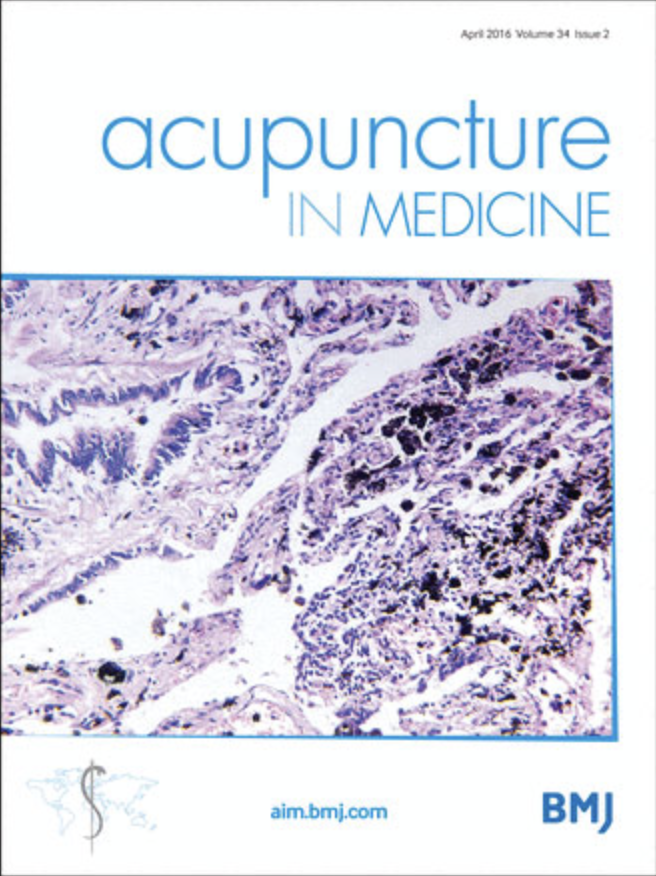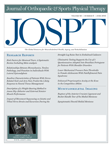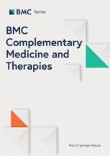Back, Hip & Leg Pain
How to submit an article:
- Registered users can submit any published journal article that has a unique DOI (Digital Object Identifier) name or link to Research Hub.
- For example, you can paste the full DOI link:
https://doi.org/10.1109/5.771073or just the DOI name:10.1109/5.771073into the field above and click submit. - The person who is first to submit a valid article to Research Hub will forever be credited for it, and every article submission earns you +6 Research Points.
Published research studies are articles that present the findings of original research that has undergone a peer-review process and has been made publicly available in scholarly journals, books or other media.

Efficacy and Safety of Acupuncture Therapy for Patients with Acute Ankle Sprain: A Systematic Review and Meta-Analysis of Randomized Controlled Trials
2020 Oct 16 Evidence-Based Complementary and Alternative Medicine Liu AF, Gong SW, Chen JX, Zhai JB
Systematic Review Meta-Analysis Ankle Back, Hip & Leg PainAcupuncture could significantly relieve pain and increase cure rate for acute ankle sprain, even producing improved results when combined with other therapies.

Cupping therapy and chronic back pain: systematic review and meta-analysis
2018 Sep Revista Latino-Americana de Enfermagem Moura, C. C., Chaves, É., Cardoso, A., et al.
Systematic Review Meta-Analysis Cupping Back, Hip & Leg Pain Back PainCupping therapy has demonstrated notable effects in reducing chronic back pain in adults.

Acupuncture for Lumbar Disc Herniation: A Systematic Review and Meta-Analysis
2018 Apr 1 Acupuncture in Medicine Tang S, Mo Z, Zhang R
Systematic Review Meta-Analysis Lumbar Disc Herniation Lumbar Disc Prolapse Back, Hip & Leg PainAcupuncture showed a more favourable effect in the treatment of lumbar disc herniation than lumbar traction, ibuprofen, diclofenac sodium and meloxicam.

Effectiveness of Acupuncture Therapies to Manage Musculoskeletal Disorders of the Extremities: A Systematic Review
2016 May 31 Journal of Orthopaedic & Sports Physical Therapy Cox, J., Varatharajan, S., Côté, P., et al.
Systematic Review Back, Hip & Leg PainAcupuncture, specifically needle-based and electroacupuncture, can potentially provide therapeutic benefits for carpal tunnel syndrome, Achilles tendinopathy, and shoulder injuries.

The Efficacy of Acupuncture for the Treatment of Sciatica: A Systematic Review and Meta-Analysis
2015 Dec 6 Evidence-Based Complementary and Alternative Medicine Ji M, Wang X, Chen M, Shen Y, Zhang X, Yang J
Systematic Review Meta-Analysis Back, Hip & Leg PainAcupuncture may be effective in treating the pain associated with sciatica.
Research insights are moderated by the Research Hub team and offer an at-a-glance overview of interesting research findings.

2020 Evidence-Based Complementary and Alternative Medicine
Acupuncture could significantly relieve pain and increase cure rate for acute ankle sprain, even producing improved results when combined with other therapies.
Systematic Review Ankle
Efficacy and Safety of Acupuncture Therapy for Patients with Acute Ankle Sprain: A Systematic Review and Meta-Analysis of Randomized Controlled Trials
Liu AF, Gong SW, Chen JX, Zhai JB

2018 Revista Latino-Americana de Enfermagem
Cupping therapy has demonstrated notable effects in reducing chronic back pain in adults.
Systematic Review Back Pain Cupping
Cupping therapy and chronic back pain: systematic review and meta-analysis
Moura, C. C., Chaves, É., Cardoso, A., et al.

2018 Acupuncture in Medicine
Acupuncture showed a more favourable effect in the treatment of lumbar disc herniation than lumbar traction, ibuprofen, diclofenac sodium and meloxicam.
Systematic Review Lumbar Disc Herniation Lumbar Disc Prolapse
Acupuncture for Lumbar Disc Herniation: A Systematic Review and Meta-Analysis
Tang S, Mo Z, Zhang R

2016 Journal of Orthopaedic & Sports Physical Therapy
Acupuncture, specifically needle-based and electroacupuncture, can potentially provide therapeutic benefits for carpal tunnel syndrome, Achilles tendinopathy, and shoulder injuries.
Systematic Review
Effectiveness of Acupuncture Therapies to Manage Musculoskeletal Disorders of the Extremities: A Systematic Review
Cox, J., Varatharajan, S., Côté, P., et al.

2015 Evidence-Based Complementary and Alternative Medicine
Acupuncture may be effective in treating the pain associated with sciatica.
Systematic Review
The Efficacy of Acupuncture for the Treatment of Sciatica: A Systematic Review and Meta-Analysis
Ji M, Wang X, Chen M, Shen Y, Zhang X, Yang J
Review Articles
Review articles summarise and critically evaluate the current state of research on a specific topic or field by synthesising multiple primary research studies.

Efficacy and Safety of Acupuncture Therapy for Patients with Acute Ankle Sprain: A Systematic Review and Meta-Analysis of Randomized Controlled Trials
2020 Oct 16 Evidence-Based Complementary and Alternative Medicine Liu AF, Gong SW, Chen JX, Zhai JB
Systematic Review Meta-Analysis Ankle Back, Hip & Leg PainAcupuncture could significantly relieve pain and increase cure rate for acute ankle sprain, even producing improved results when combined with other therapies.

Cupping therapy and chronic back pain: systematic review and meta-analysis
2018 Sep Revista Latino-Americana de Enfermagem Moura, C. C., Chaves, É., Cardoso, A., et al.
Systematic Review Meta-Analysis Cupping Back, Hip & Leg Pain Back PainCupping therapy has demonstrated notable effects in reducing chronic back pain in adults.
Cupping therapy has shown positive results on chronic back pain in adults, not only in behavioral variables of pain, but also in physiological parameters in the majority of RCTs evaluated in this study, which contributes to the consolidation of its use in the treatment of this clinical condition in the study population. — 29 Sep 2021

Acupuncture for Lumbar Disc Herniation: A Systematic Review and Meta-Analysis
2018 Apr 1 Acupuncture in Medicine Tang S, Mo Z, Zhang R
Systematic Review Meta-Analysis Lumbar Disc Herniation Lumbar Disc Prolapse Back, Hip & Leg PainAcupuncture showed a more favourable effect in the treatment of lumbar disc herniation than lumbar traction, ibuprofen, diclofenac sodium and meloxicam.

Effectiveness of Acupuncture Therapies to Manage Musculoskeletal Disorders of the Extremities: A Systematic Review
2016 May 31 Journal of Orthopaedic & Sports Physical Therapy Cox, J., Varatharajan, S., Côté, P., et al.
Systematic Review Back, Hip & Leg PainAcupuncture, specifically needle-based and electroacupuncture, can potentially provide therapeutic benefits for carpal tunnel syndrome, Achilles tendinopathy, and shoulder injuries.

The Efficacy of Acupuncture for the Treatment of Sciatica: A Systematic Review and Meta-Analysis
2015 Dec 6 Evidence-Based Complementary and Alternative Medicine Ji M, Wang X, Chen M, Shen Y, Zhang X, Yang J
Systematic Review Meta-Analysis Back, Hip & Leg PainAcupuncture may be effective in treating the pain associated with sciatica.
Clinical Trials
Clinical trials are research studies that involve people and are conducted to evaluate the safety and efficacy of new treatments or interventions, such as drugs, medical devices, or behavioural therapies.
Study Protocols
Published study protocols are detailed plans that outline the objectives, methodology, statistical analyses, and organisation of a research study that have been made publicly available for others to review and use as a reference.
Presentation Slides

Systematic Review
Acupuncture could significantly relieve pain and increase cure rate for acute ankle sprain, even producing improved results when combined with other therapies.
Liu AF, Gong SW, Chen JX, Zhai JB

Systematic Review
Cupping therapy has demonstrated notable effects in reducing chronic back pain in adults.
Moura, C. C., Chaves, É., Cardoso, A., Nogueira, D. A., Corrêa, H. P., & Chianca, T.

Systematic Review
Acupuncture showed a more favourable effect in the treatment of lumbar disc herniation than lumbar traction, ibuprofen, diclofenac sodium and meloxicam.
Tang S, Mo Z, Zhang R

Systematic Review
Acupuncture, specifically needle-based and electroacupuncture, can potentially provide therapeutic benefits for carpal tunnel syndrome, Achilles tendinopathy, and shoulder injuries.
Cox, J., Varatharajan, S., Côté, P., & Optima Collaboration

Systematic Review
Acupuncture may be effective in treating the pain associated with sciatica.
Ji M, Wang X, Chen M, Shen Y, Zhang X, Yang J

Systematic Review
The use of acupuncture may be more effective than drugs and may enhance the effect of drugs for patients with sciatica.
Zongshi Qin, Xiaoxu Liu, Jiani Wu, Yanbing Zhai, Zhishun Liu,

Systematic Review
Acupuncture, either used in isolation or as an adjunct to conventional therapy, provides short-term improvements in pain and function for chronic low back pain.
Liu L, Skinner M, McDonough S, Mabire L, Baxter GD.

Systematic Review
The use of acupuncture for osteoarthritis is associated with significant reductions in pain intensity, improvement in functional mobility and quality of life.
Manyanga, T., Froese, M., Zarychanski, R. et al.

Systematic Review
There is evidence supporting the effectiveness of acupuncture for plantar heel pain comparable to that available for conventionally used interventions, such as stretching, night splints or dexamethasone.
Clark RJ, Tighe M
Executive Summary
Write an executive summary in the form of a blog article on the topic of "Research into Chinese medicine treatment for Back, Hip & Leg Pain" summarising the research below and using language that can be easily understood by patients and avoiding medical jargon using a professional and caring tone of voice.
Write an executive summary in the form of a blog article on the topic of "Researched Chinese medicine treatments for Back, Hip & Leg Pain" summarising the research below in an objective and easy to understand way, and using language that can be easily understood by patients. Group the article into Chinese medicine treatments first, followed by nutrition and other treatments. Avoid using medical jargon and use a professional and caring tone of voice.
Write me a concise but easy to understand executive summary on the topic of "Chinese medicine treatments for Back, Hip & Leg Pain" based on the following research that I will give you. Your summary should be 2 paragraphs long in Australian English spelling and include references to the studies.
A Systematic Review published in 2020 in the journal Evidence-Based Complementary and Alternative Medicine found that Acupuncture could significantly relieve pain and increase cure rate for acute ankle sprain, even producing improved results when combined with other therapies. The researchers executed parallel-group randomized controlled trials without any language or publication date restraints. Participants suffering from acute ankle sprains were included irrespective of their demographic details, or the diagnostic criteria used to confirm their condition. Experimental interventions consisted of acupuncture alone or a combination of acupuncture and traditional therapies, while the control interventions were either no treatment, placebo, or traditional therapies only. The Kofoed ankle score was the main outcome, with secondary outcomes covering a range of parameters from pain scale to cure rate. Several databases were searched to find potentially eligible studies up to the date of September 10, 2020, with trial registry platforms and the reference lists of the eligible studies also being verified for any ongoing or unpublished studies. The study analysed seventeen eligible studies to study the effect of acupuncture on acute ankle sprains. No significant difference was found between the Kofoed ankle scores of the acupuncture and Rest, Ice, Compression, Elevation (RICE) groups. However, acupuncture did show a significant impact on pain relief and an increased cure rate compared to the RICE group. The combination of acupuncture and RICE also resulted in a significant increase in pain relief and cure rate compared to just the RICE method. Acupuncture, when combined with massage, brought about a significant reduction in pain compared to just massage, while the combination with traditional Chinese medicine outperformed Chinese medicine alone in pain relief, duration of pain, and cure rate. There were almost no adverse reactions reported, with one mild drug-related allergic reaction which healed without any treatment.
A Systematic Review published in 2018 in the journal Revista Latino-Americana de Enfermagem found that Cupping therapy has demonstrated notable effects in reducing chronic back pain in adults. The systematic review and meta-analysis involved two independent researchers who examined national and international databases. They also explored the reference lists of additional systematic reviews. The quality of the studies was evaluated using the Jadad scale, a globally recognized tool assessing the methodological quality of clinical trials. Extracting 16 studies for qualitative review and 10 for quantitative analysis, the research found positive impacts of cupping therapy on chronic back pain in adults. It was noted that there isn't a standardized protocol for treatment with this therapy. The study mainly evaluated outcomes based on factors such as pain intensity, physical incapacity, the quality of life, and the nociceptive threshold before the application of mechanical stimulus. A noteworthy reduction in pain intensity was seen through the use of cupping therapy.
A Systematic Review published in 2018 in the journal Acupuncture in Medicine found that Acupuncture showed a more favourable effect in the treatment of lumbar disc herniation than lumbar traction, ibuprofen, diclofenac sodium and meloxicam. Thirty RCTs involving 3503 participants were included in the study. Meta-analysis showed that acupuncture had a higher total effective rate than lumbar traction, ibuprofen, diclofenac sodium and meloxicam. Acupuncture was also better than lumbar traction and diclofenac sodium in terms of visual analogue scale (VAS) scores, and better than lumbar traction with respect to Japanese Orthopaedic Association (JOA) scores. In addition, the total effective rate in five individual trials was greater for acupuncture than for mannitol plus dexamethasone and mecobalamin, ibuprofen plus fugui gutong capsule, loxoprofen, mannitol plus dexamethasone and huoxue zhitong decoction, respectively. Additionally, two individual trials showed a superior effect of acupuncture in VAS scores comparedwith ibuprofen or mannitol plus dexamethasone, respectively.
A Systematic Review published in 2016 in the journal Journal of Orthopaedic & Sports Physical Therapy found that Acupuncture, specifically needle-based and electroacupuncture, can potentially provide therapeutic benefits for carpal tunnel syndrome, Achilles tendinopathy, and shoulder injuries. Methodology: The researchers executed a systematic review on multiple databases such as MEDLINE, Embase, CINAHL, PsycINFO, and Cochrane Central Register of Controlled Trials covering a period from 1990 to 2015. Their search was focused on identifying responsive randomized controlled trials, cohort studies, and case-control studies which focused on the effectiveness and safety of acupuncture therapies for musculoskeletal disorders. The Scottish Intercollegiate Guidelines Network criteria was used to evaluate the eligible studies. Furthermore, best-evidence synthesis was performed to sum up results from studies with low bias risk. A sensitivity analysis was also performed to comprehend the potential impact of excluding studies with high bias risk. Results: The comprehensive review identified 5180 articles, from which 15 were selected for final analysis (10 had a low risk of bias and 5 with a high risk of bias). Among other findings, the results showed that traditional needle acupuncture may outperform oral steroids and vitamin B1/B6 supplements for carpal tunnel syndrome and exercises for Achilles tendinopathy. Moreover, electroacupuncture might be superior than placebo for shoulder injuries. The extent of benefits offered by dry needling for plantar fasciitis remained equivocal. Traditional needle acupuncture didn't show significant advantage over placebo for upper extremity pain, or no intervention for patellofemoral pain, and findings for shoulder pain were inconclusive.
A Systematic Review published in 2015 in the journal Evidence-Based Complementary and Alternative Medicine found that Acupuncture may be effective in treating the pain associated with sciatica. A total of 12 studies (involving 1842 participants) were included. Results showed that acupuncture was more effective than conventional Western medicine (CWM) in outcomes effectiveness, pain intensity, and pain threshold. Subgroup and sensitivity analysis found that the results did not change in different treatment method and drug categories substantially. The reported adverse effects were acceptable.
A Systematic Review published in 2015 in the journal Evidence-Based Complementary and Alternative Medicine found that The use of acupuncture may be more effective than drugs and may enhance the effect of drugs for patients with sciatica. The results of this systematic review suggest that the use of acupuncture may more effectively relieve leg pain/lumbago and improve global assessment of sciatica when compared with NSAID (ibuprofen, meloxicam, and diclofenac) treatment. Moreover, adjuvant acupuncture may enhance the effect of medications in leg pain/lumbago relief. To patients, acupuncture points appear more effective than nonacupoints. Acupuncture is relatively safe and is rarely associated with serious adverse events in patients with sciatica. However, this meta-analysis was lacking in relevant and rigorous RCTs. Because the evidence was limited, higher quality and more rigorously designed clinical trials with larger sample sizes will be needed to further confirm our findings.
A Systematic Review published in 2015 in the journal Evidence-Based Complementary and Alternative Medicine found that Acupuncture, either used in isolation or as an adjunct to conventional therapy, provides short-term improvements in pain and function for chronic low back pain. Sixteen systematic reviews were appraised. Overall, the methodological quality was low and external validity weak. For acute LBP, evidence that acupuncture has a more favorable effect than sham acupuncture in relieving pain was inconsistent; it had a similar effect on improving function. For chronic LBP, evidence consistently demonstrated that acupuncture provides short-term clinically relevant benefits for pain relief and functional improvement compared with no treatment or acupuncture plus another conventional intervention.
A Systematic Review published in 2014 in the journal BMC Complementary Medicine and Therapies found that The use of acupuncture for osteoarthritis is associated with significant reductions in pain intensity, improvement in functional mobility and quality of life. In this systematic review, we found acupuncture administered to adults with osteoarthritis to be associated with a statistically significant reduction in pain intensity, improved functional mobility and improved health-related quality of life. Reductions in pain were greater in trials with longer intervention periods. Though under-reported and inconsistently described, major adverse events with acupuncture were not reported. Subgroup analyses suggest that acupuncture is most effective for reducing osteoarthritic pain when administered for more than four weeks. Outcome assessment for the majority of trials occurred immediately following the intervention period and thus the durability of treatment effects are unknown.
A Systematic Review published in 2012 in the journal Acupuncture in Medicine found that There is evidence supporting the effectiveness of acupuncture for plantar heel pain comparable to that available for conventionally used interventions, such as stretching, night splints or dexamethasone. Five randomised controlled trials and three non-randomised comparative studies were included. High quality studies report significant benefits. In one, acupuncture was associated with significant improvement in pain and function when combined with standard treatment (including non-steroidal anti-inflammatory drugs). In another, acupuncture point PC7 improved pain and pressure pain threshold significantly more than LI4. Other papers were of lower quality but suggest benefits from other acupuncture approaches.
Moderation Tools
Topic
Sign In
Users not signed in are limited to viewing the 5 most recent items of content.
Cupping therapy has shown positive results on chronic back pain in adults, not only in behavioral variables of pain, but also in physiological parameters in the majority of RCTs evaluated in this study, which contributes to the consolidation of its use in the treatment of this clinical condition in the study population. — 29 Sep 2021